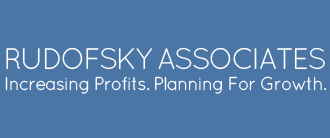Willful Blindness – A Consultant’s Take
I read Michael Gerber’s eMyth Revisited in 2003, the same year I started my consulting practice. I felt that it gave me a roadmap to success as a consultant. The book opens by describing a woman who loves to bake, and her friends all suggest “you should be running a bakery.” So off she goes. However, she soon becomes overwhelmed by the managerial responsibilities that come with owning a bakery, taking her away from her true love and passion: baking pies.
“Simple,” I thought, “I’ll help resolve this disconnect by assisting my clients on the managerial side of the business so they can continue to ‘bake the pies.’ And there will be an educational piece to my practice too: I will teach these bakers enough about finance so they are better equipped to manage their businesses.”
But as the years have gone by, and I have gained experience as a consultant, I have come to realize there is something deficient about this model; some of my clients have a real aversion to learning how to manage the financial side of the business. Some even avoid hiring anyone to do it for them! There was the entrepreneur who did not file tax returns for numerous consecutive years, with the thin justification that these were loss years so they didn’t owe any money; but he put himself at risk of losing valuable tax-loss carry forwards. Then there was the maker of high quality organic desserts who couldn’t persuade her partner to create a “bill of materials,” and consequently did not know if some products were being sold below cost. And there have been numerous instances of people thinking about starting, or actually starting, businesses without having a clear idea of how much capital it would take them to get to positive cash flow. This systemic avoidance went well beyond what was described in eMyth.
Fortunately, Margaret Heffernan has written Willful Blindness and I believe it provides a deeper psychological/sociological explanation for why business owners are blinding themselves from the positive results of proper financial management. Figuring out whether the business is going to make a profit, what to do if it isn’t going to make a profit, where to find money to pay quarterly estimated taxes, etc. is not likely on the top of any business owners “to-do” list. Avoiding these and other similar activities for a day or a week may seem acceptable behavior, but as Heffernan writes, “All of us want to bury our heads in the sand when taxes are due, but in trying to pretend the threat doesn’t exist, and we don’t have to change, we are… trying hard to avoid conflict.”
I’ve also recently had the chance to do join up with Richard Magid and his team at Soundboard for some important client work and to witness firsthand how effective they are in the areas of coaching, training and cultural assessments. Their wide range of successful client work has made them highly sensitive to the discussions that are not taking place – but should be. If you are looking for consultants who can help get your employees more engaged, you should give them a call.
Client education will continue to be an important aspect of what I do, and I will continue to ask myself whether individual clients are truly coachable in financial literacy or not. I’m at a point when I can no longer keep my head in the sand when it comes to business owners who are not willing to get into the financials, because your business is too important not to look at the financials, and mine is too.





